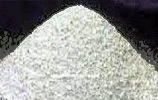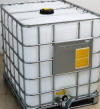Search for the supplies that you need here:
DMF Support and Documentations Available |
|||
 WHO-GMP Certified Good Manufacturing Practice Certified by World Health Organization |
 WC, Written Confirmation for Active Substance to be imported into European Union (EU). |
||
Sodium Starch Glycolate USP NF BP Ph Eur EP JP Grade Manufacturers
Anmol Chemicals is a manufacturer supplier exporter of Sodium Starch Glycolate and it offers materials as per IP BP EP Ph Eur USP NF JP FCC Food Grade as per the the latest monograph at best prices. Anmol Chemicals Group, established in 1976, is the pioneer manufacturer of Specialty Chemicals, Pharmaceutical Excipients, Some API, Food Chemicals in India. Anmol Chemicals Group has manufacturing facilities spread across Western India, representatives in Houston, Chicago USA and Dubai, UAE. We also have toll manufacturing units for processing chemicals in a few countries around the world. We make IP, BP, EP, USP, NF, Ph. Eur., JP, FCC or Food Grade, Analytical Reagent Grade, LR or Laboratory Reagent Grades and Pure Grades of various chemicals. All our items are analyzed to meet the required standards. We can supply the product in grams for your laboratory trial and in tons for your plant scale jobs.
We manufacture Bulk Drugs / API, Excipients, Pharmaceuticals (IP BP USP NF Ph Eur EP JP), Specialty Chemicals (Pure/Reagent), Mineral Fortifiers (FCC). Our manufacturing facility is FDA approved and GLP, cGMP, ISO9001, ISO14001, ISO/IEC 17025, ISO22000, FSSC 22000, ISO45001, FSSAI, Kosher, HALAL, COPP, WHO-GMP certified and Written Confirmation (WC) is available. Solid materials can be customized for particle size, shape, and bulk density. We observe WHO Good Manufacturing Practices and Good Laboratory Practices. We are a government-recognized STAR Export House and "Authorised Economic Operator (AEO)" per Indian Customs.
All technical documents and DMF support available.
Sodium Starch Glycolate SDS of Manufacturers

Sodium starch glycolate is used as a pharmaceutical grade dissolution excipient for tablets and capsules. Sodium starch glycolate absorbs water rapidly, resulting in swelling which leads to rapid disintegration of tablets and granules. It is used as a disintegrant, a suspending agent and as a gelling agent.
Sodium Starch Glycolate BP Ph Eur (Type A) Grade Specifications
DEFINITION
Sodium salt of a cross-linked partly O-carboxymethylated potato starch.
Content:
2.8 per cent to 4.2 per cent of Na (A 22.99) (substance washed with ethanol (80 per cent V/V) and dried).
CHARACTERS
Appearance:
White or almost white, fine, free-flowing powder, very hygroscopic.
Solubility:
Practically insoluble in methylene chloride. It gives a translucent suspension in water.
Examined under a microscope it is seen to consist of: granules, irregularly shaped, ovoid or pear-shaped, 30-100 µm in size, or rounded, 10-35 µm in size; compound granules consisting of 2-4 components occur occasionally; the granules have an eccentric hilum and clearly visible concentric striations; between crossed nicol prisms, the granules show a distinct black cross intersecting at the hilum; small crystals are visible at the surface of the granules. The granules show considerable swelling in contact with water.
IDENTIFICATION
A. pH (see Tests).
B. Prepare with shaking and without heating a mixture of 4.0 g of the substance to be examined and 20 ml of carbon dioxide-free water. The mixture has the appearance of a gel. Add 100 ml of carbon dioxide-free water and shake. A suspension forms that settles after standing.
C. To an acidified solution, add iodinated potassium iodide solution. The solution becomes blue or violet.
D. Solution S2 (see Tests) gives reaction of sodium.
TESTS
Solution S1:
Centrifuge the suspension obtained in identification test B at 2500 g for 10 minutes. Collect carefully the supernatant liquid.
Solution S2: Place 2.5 g in a silica or platinum crucible and add 2 ml of a 500 g/l solution of sulphuric acid. Heat on a water-bath, then cautiously over a naked flame, raising the temperature progressively, then incinerate in a muffle furnace at 600 ± 25C. Continue heating until all black particles have disappeared. Allow to cool, add a few drops of dilute sulphuric acid, heat and incinerate as above. Allow to cool, add a few drops of ammonium carbonate solution, evaporate to dryness and incinerate cautiously. Allow to cool and dissolve the residue in 50 ml of water.
Appearance of solution S1:
Solution S1 is clear and colourless.
pH: 5.5 to 7.5. Disperse 1.0 g in 30 ml of water.
Sodium glycolate:
Maximum 2.0 per cent. Carry out the test protected from light.
Sodium chloride:
Maximum 7.0 per cent.
Iron:
Maximum 20 ppm determined on 10 ml of solution S2.
Heavy metals:
Maximum 20 ppm. 1.0 g complies with test D. Prepare the reference solution using 2 ml of lead standard solution (10 ppm Pb).
Loss on drying:
Maximum 10.0 per cent, determined on 1.000 g by drying in an oven at 130C for 1.5 h.
Microbial contamination:
It complies with the test for Escherichia coli and Salmonella.
Sodium Starch Glycolate BP Ph Eur (Type B) Grade Specifications
DEFINITION
Sodium salt of a cross-linked partly O-carboxymethylated potato starch.
Content:
2.0 per cent to 3.4 per cent of Na (A 22.99) (substance washed with ethanol (80 per cent V/V) and dried).
CHARACTERS
Appearance:
White or almost white, fine, free-flowing powder, very hygroscopic.
Solubility:
Practically insoluble in methylene chloride. It gives a translucent suspension in water.
Examined under a microscope it is seen to consist of: granules, irregularly shaped, ovoid or pear shaped, 30-100 µm in size, or rounded, 10-35 µm in size; compound granules consisting of 2-4 components occur occasionally; the granules have an eccentric hilum and clearly visible concentric striations; between crossed nicol prisms, the granules show a distinct black cross intersecting at the hilum; small crystals are visible at the surface of the granules. The granules show considerable swelling in contact with water.
IDENTIFICATION
A. pH (see Tests).
B. Prepare with shaking and without heating a mixture of 4.0 g of the substance to be examined and 20 ml of carbon dioxide-free water. The mixture has the appearance of a gel. Add 100 ml of carbon dioxide-free water and shake. A suspension forms that settles after standing.
C. To an acidified solution, add iodinated potassium iodide solution. The solution becomes blue or violet.
D. Solution S2 (see Tests) gives reaction of sodium.
TESTS
Solution S1:
Centrifuge the suspension obtained in identification test B at 2500 g for 10 minutes. Collect carefully the supernatant liquid.
Solution S2:
Place 2.5 g in a silica or platinum crucible and add 2 ml of a 500 g/l solution of sulphuric acid. Heat on a water-bath, then cautiously over a naked flame, raising the temperature progressively, and then incinerate in a muffle furnace at 600 ± 25C. Continue heating until all black particles have disappeared. Allow to cool, add a few drops of dilute sulphuric acid and heat and incinerate as above. Allow to cool, add a few drops of ammonium carbonate solution, evaporate to dryness and incinerate cautiously. Allow to cool and dissolve the residue in 50 ml of water. Appearance of solution S1
Appearance of solution S1:
Solution S1 is clear and colourless.
pH:
3.0 to 5.0. Disperse 1.0 g in 30 ml of water.
Sodium glycolate:
Maximum 2.0 per cent. Carry out the test protected from light.
Sodium chloride:
Maximum 7.0 per cent.
Iron: Maximum 20 ppm determined on 10 ml of solution S2.
Heavy metals:
Maximum 20 ppm.
Loss on drying:
Maximum 10.0 per cent, determined on 1.000 g by drying in an oven at 130C for 1.5 h.
Microbial contamination:
It complies with the test for Escherichia coli and Salmonella.
Sodium Starch Glycolate BP Ph Eur (Type C) Grade Specifications
DEFINITION
Sodium starch glycolate (type C) is the sodium salt of a cross-linked by physical dehydration, partly O-carboxymethylated starch. It contains not less than 2.8 per cent and not more than 5.0 per cent of Na (A 22.99), calculated with reference to the substance washed with alcohol (80 per cent V/V) and dried.
CHARACTERS
A white or almost white, fine, free-flowing powder, very hygroscopic, soluble in water, practically insoluble in methylene chloride. It gives a translucent gel-like product in water.
Examined under a microscope it is seen to consist of granules, irregularly shaped, ovoid or pear-shaped, 30 µm to 100 µm in size, or rounded, 10 µm to 35 µm in size; compound granules consisting of two to four components occur occasionally; the granules have an eccentric hilum and clearly visible concentric striations; between crossed nicol prisms, the granules show a distinct black cross intersecting at the hilum; small crystals are visible at the surface of the granules. The granules show considerable swelling in contact with water.
IDENTIFICATION
A. It complies with the test for pH (see Tests).
B. Mix with shaking and without heating 4.0 g and 20 ml of carbon dioxide-free water. The mixture has the appearance of a gel. Add 100 ml of carbon dioxide-free water and shake: the gel remains stable (difference from types A and B). Keep the gel for the tests for appearance of gel and pH.
C. To 5 ml of the gel obtained in identification test B add 0.05 ml of iodine solution. A dark blue colour is produced.
D. Solution S (see Tests) gives reaction of sodium.
TESTS
Solution S:
Place 2.5 g in a silica or platinum crucible and add 2 ml of a 500 g/l solution of sulphuric acid. Heat on a water-bath, then cautiously over a naked flame, raising the temperature progressively, and then incinerate in a muffle furnace at 600 ± 25C. Continue heating until all black particles have disappeared. Allow to cool, add a few drops of sulphuric acid and heat and incinerate as described above. Allow to cool, add a few drops of ammonium carbonate solution, evaporate to dryness and incinerate cautiously. Allow to cool and dissolve the residue in 50 ml of water.
Appearance of gel:
The gel prepared under identification test B is colourless.
pH:
The pH of the gel prepared under identification test B is 5.5 to 7.5.
Sodium glycolate:
Carry out the test protected from light. (2.0 per cent).
Sodium chloride:
Not more than 1 per cent.
Iron:
10 ml of solution S complies with the limit test for iron (20 ppm).
Heavy metals:
1.0 g complies with limit test D for heavy metals (20 ppm).
Loss on drying:
Not more than 7.0 per cent, determined on 1.000 g by drying in an oven at 100C to 105C for 4 h.
Microbial contamination:
It complies with the test for Escherichia coli and Salmonell).
Sodium Starch Glycolate USP NF Grade Specifications
Starch carboxymethyl ether, sodium salt.
Sodium Starch Glycolate is the sodium salt of a carboxymethyl ether of starch or of a cross-linked carboxymethyl ether of starch. It may contain not more than 7.0 percent of Sodium Chloride. The pH and assay requirements for Type A and Type B are set forth in the accompanying table.
| pH | % Sodium, combined as sodium starch glycolate |
| Type ----- Minimum - to ----- Maximum | Minimum ----- to ------ Maximum |
| A -------- 5.5 ----- to ----- 7.5 | 2.8 --------- to ------ 4.2 |
| B -------- 3.0 ----- to ----- 5.0 | 2.0 --------- to ------ 3.4 |
Identification:
A: Infrared Absorption 197K.
B: A slightly acidified solution of it is colored blue to violet by the addition of iodine and potassium iodide TS 1.
C: To a 2-mL portion of the solution prepared for the test for Limit of iron, add 4 mL of Potassium pyroantimonate solution. If necessary, rub the inside of the test tube with a glass rod. A white, crystalline precipitate is formed.
Potassium pyroantimonate solution:To 2 g of potassium pyroantimonate add 100 mL of water. Boil the solution for about 5 minutes, cool quickly, and add 10 mL of a solution of potassium hydroxide (3 in 20). Allow to stand for 24 hours, and filter.
D: Sodium Starch Glycolate imparts an intense yellow color to a non-luminous flame.
Microbial limits — It meets the requirements of the tests for absence of Salmonella species and Escherichia coli.
pH: Disperse 1 g in 30 mL of water. The pH of the resulting suspension is either between 5.5 and 7.5 for Type A or between 3.0 and 5.0 for Type B.
Loss on drying: Dry it at 130 for 90 minutes: it loses not more than 10.0% of its weight.
Heavy metals: 0.002%.
Limit of iron: (0.002%).
Limit of sodium chloride: To pass the test.
Limit of sodium glycolate: (2.0%).
We also manufacture Sodium Starch Glycolate EP JP Grade.
Keywords: Starch carboxymethyl ether, sodium salt, Sodium Starch Glycolate IP BP Ph Eur EP USP Analytical Reagent FCC Food Grade CAS Number 9063-38-1 Manufacturer Supplier Exporter Monograph Uses Chemical Molecular Formula Weight.



Manufacturers
ANMOL CHEMICALS Private Limited
Representatives in Houston, Chicago and New York, USA
TEL: (OFF) +91 22 23726950, +91 22 23774610, +91 22 23723564
Taloja Navi Mumbai, Banglore, INDIA
e-mail: info@anmol.org
Copyright and Usual Disclaimer is Applicable
Last updated
28-feb-25
Exporters to USA, Canada, UAE, Kuwait, Qatar, Gautemala, Tunisia, Europe, South Africa, Bangladesh, Sri Lanka, Tanzania, Kenya, Egypt, Iraq, Turkey, Israel, Vietnam, Nigeria, Uganda, Brazil, Chile, Argentina, Dubai, UAE, Saudi Arabia, Cameroon, Mexico, Brazil, Chile, Argentina, Korea, Thailand, Malaysia, Indonesia, Jakarta, Australia, China, Germany, France, etc.
Representatives in New York, Houston - Texas, Chicago - Illinois, Los Angeles.
All products are Sold for Industrial and Laboratory Use only. No other use is permitted.
Fast Selling IP BP Ph Eur EP USP NF JP Analytical Reagent FCC Food Grades of Chemicals by Anmol Chemicals
Ammonium Persulfate --- Acetic Acid Glacial --- Aluminum Chloride --- Ammonium bicarbonate --- Benzyl Alcohol --- Butylated Hydroxyanisole --- Butylated Hydroxytoluene --- Boric Acid --- Calcium Butyrate --- Calcium Chloride --- Calcium Hydroxide --- Calcium Lactobionate --- Calcium Saccharate --- Carbamide Peroxide --- Calcium Oxide --- Calcium Sulfate --- Chromic Chloride --- Fumaric Acid --- Magnesium Butyrate --- Magnesium Chloride --- Magnesium Sulfate --- Malic Acid --- Maleic Acid --- Manganese Chloride --- Manganese Sulfate --- Octyldodecanol --- Oleic acid --- Phenylethyl Alcohol --- Propylene Carbonate --- Potassium Hydroxide Pellets --- Potassium Alum --- Selenious Acid --- Sodium Acetate --- Sodium Bromate --- Sodium Selenite --- Sodium Perborate --- Sodium Hydroxide --- Sodium Sulphate --- Sodium Sulfide --- Sodium Thiosulfate --- Urea --- Zinc Chloride --- Zinc Sulphate ---
Sodium Starch Glycolate
Type A, B & C, BP Ph Eur USP NF EP JP Grades Manufacturers



















